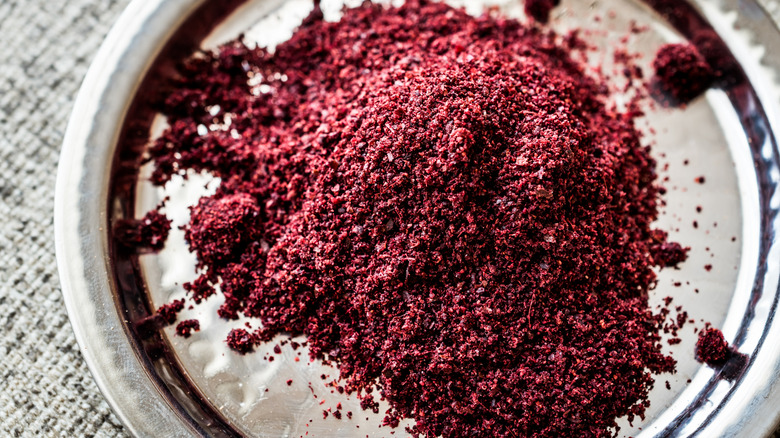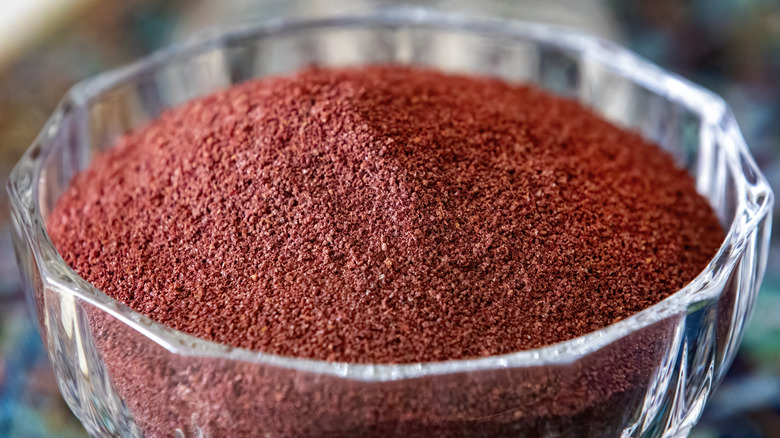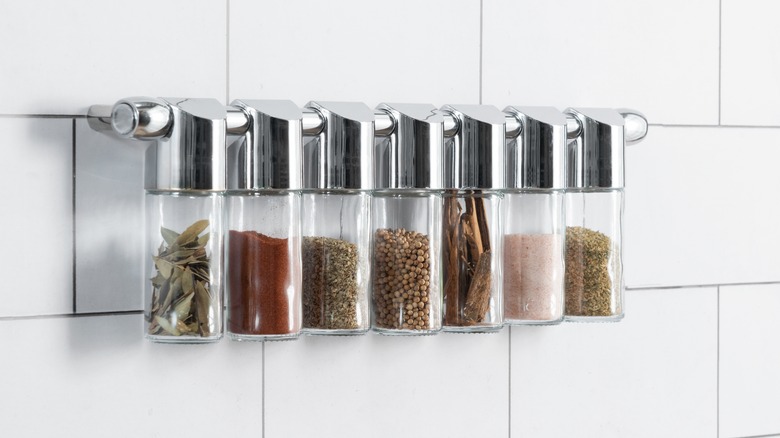How To Use Sumac To Transform Your Desserts
The pastry chef is no stranger to their spice cabinet — from pumpkin pecan rice pudding to irresistible cinnamon buns, there is no shortage of desserts that lean on their more aromatic components. Those warm, unctuous notes are the key to some of the most iconic sweet dishes out there, but relying on the usual suspects of cinnamon, nutmeg, and the like can also be, well, a little bit boring. However, there is a black sheep in that family, one that could spark inspiration for even the least adventurous of pastry chefs.
Sumac is a spice made from the dried, pulverized roots of the sumac plant, and has been in use in Western cookery since the medieval period. Though it's usually thought of as occupying a more savory space — it's used frequently in the Middle East and Mediterranean on salads, lamb, and chicken — with its unique blend of earthy mineral notes and overtones of bright lemony citrus, it pairs shockingly well with sweets.
When putting this ancient spice to work, you're going to want to mostly rely on infusion — all you need is a little patience, some sugar, water, and sumac, and you've got yourself a versatile jumping-off point for any number of recipes. Sumac works perfectly as a final flourish, too — sprinkle it on snickerdoodle cookies, or add it to a breakfast muffin for a citrusy kick. The possibilities are endless.
How to make the most of sumac in desserts
There are plenty of simple yet delicious ways to make the most of sumac. A good place to start, perhaps, is with a sumac-infused syrup. Just mix water, sugar (as you would for a normal simple syrup), and finally sumac, and heat over a gentle flame until the sugar is dissolved and the mixture has ever so slightly reduced. Set aside to let it cool, and you've got a super versatile way to bring that essence of lemony, subtly tangy sumac to anything you'd like, from pancakes to cocktails!
Sumac is a very delicate spice, and as such, it doesn't really develop when blasted with heat — instead, it's better left to gently meddle with cake batters or to be used as a finishing touch. One of the best ways to use it is to blend it into icing — a perfect earthy addition to a warming fall carrot cake. If you're trying to eke out the last of those summer flavors, it'll work wonders to bring a subtle Levantine touch (along with some za'atar) and some citrusy brightness to a beautifully moist zucchini cake, too.
How to source and store sumac
A few years ago, you'd be hard-pressed to find sumac without a little (or a lot, depending on where you live) effort. Any specialist spice shop will carry it, that much is certain. But thankfully, a recent wave of popularity and demand for Middle Eastern, spice-heavy cuisine has meant that ingredients like sumac are becoming more and more available to the average shopper. Stores like Whole Foods and Trader Joe's, for example, are easy places to find it, and it's only growing in popularity.
Most people don't pay too much attention to how they store their spices — keep it in a jar, in a cupboard, or on that spice rack you decided you were going to build that one time. Luckily, sumac is pretty forgiving and shouldn't deteriorate too much, too quickly. But the general rule of thumb with spices is to keep them in a closed, preferably airtight container, and out of direct sunlight. Following that super simple regimen can ensure that you keep your sumac as fresh and bright as the day you got it, ready to use in many more desserts to come.



